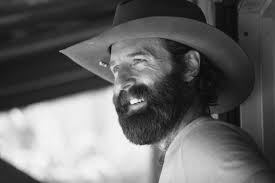By Sean Dietrich
The Notre Dame Cathedral in Paris caught fire and the world watched it burn. The only word that comes to mind is “tragedy.” A real tragedy.
I never got to see the Cathedral of Notre Dame. Though, I had a chance once when I was nineteen. A girl I was dating from Dothan was going to France on scholarship. She asked me to go with her.
It was a bad idea. I am a small-town American who has never traveled overseas. The idea of leaving U.S. soil makes me break out in hives—I wouldn’t survive the Turkish toilets.
I told her to send me a postcard. I never saw her again.
But I always wanted to go. In fact, there are only a few things I’d like to see in person before I die:
The World Series. The Dixie Belle Riverboat. And the spires of Notre Dame de Paris.
I guess I missed my chance.
Today, my wife and I were riding through the Arizona wilderness after spending a weekend at the Grand Canyon. The local radio station interrupted George Strait to announce that Notre Dame was on fire.
My wife turned up the volume. A reporter with a heavy French accent said:
“Ze greatest relic of our civilization is engulfed in flames.” The announcer’s voice broke with emotion. “It is a tragedy, people, a true tragedy…”
My wife covered her mouth.
We pulled over at a burger joint outside Flagstaff, not far from historic Route 66. And in the all-American diner we watched the corner television broadcast a scene from Hell.
A flaming cathedral roof, falling to pieces. Dante’s Inferno.
“I been there once,” said our waitress, filling my coffee mug. “My family’s Italian Catholic, we saw the cathedral last year and my grandpa was holding my hand all along the tour, crying at the relics.”
“We’ve been there, too,” said another man who was eating lunch with his daughter. “Visited one summer, took my breath away.”
The man’s daughter nodded in agreement and kept working on her French fries.
“I couldn’t believe the rose windows,” our waitress went on. “I probably took a hundred pictures of the windows alone.”
The windows she’s referring to are the famous circular stained glass works, adorning the cathedral’s main portals.
The waitress showed us pictures on her phone. Those at the lunch counter craned necks to get a glimpse. We marveled.
The waitress replaced her cellphone in her pocket and made the Sign of the Cross.
“Just think,” said the waitress, “that building dates back to the days of Saint Francis of Assisi.”
It was sobering. My wife couldn’t eat her hashbrowns because she was watching the devastation. I saw a tear in the corner of her eye.
My wife tells me she once stood in Notre Dame, looking at its rafters, and she felt something deep. Awe, maybe.
“Uh oh,” a man said. “Look.”
It happened. The television showed footage of Notre Dame’s French Gothic spire, falling downward into a blaze. It toppled headfirst.
People in the restaurant let out small gasps. An old man sighed. So did the waitress. So did I.
I suppose we all knew what this meant. It meant the wooden lattice work that predates our surnames is gone. Certainly, it might be rebuilt someday, but it will never be what was lost.
Thus, on a quiet Monday afternoon, somewhere in America, my wife and I ate lunch in the company of fellow mourners.
We were 5,000 miles away, in a side-of-the-road eatery, but in our hearts we were standing in the City of Lights across the Atlantic.
We watched, shaking our heads, biting our lips, and a few of us wiped our eyes.
Images of flames. European reporters wearing looks of disbelief. An eight-hundred-and-fifty-year-old holy monument, reduced to ashes.
It was not just a chapel, our waitress explained.
It was a subject of Impressionist paintings. It was a muse for Victor Hugo’s literary masterpiece. It contains what many believe to be the crown of thorns from the Crucifixion.
After our waitress served her last customer, she removed her apron and walked outside. I could see her through the diner window. She sat with hands clasped and head bowed.
I paid at the register. I took a final glance at the disturbing scenes on TV and realized I will never get to see it. At least not the way it was.
In the parking lot, I passed our waitress, seated on a bench. I couldn’t make out what she was saying, but I caught a few words.
“Áve María, grátia pléna,
Dóminus técum…”
It was a tragedy. A real tragedy.
Sean Dietrich is a columnist, and novelist, known for his commentary on life in the American South. His work has appeared in Southern Living, the Tallahassee Democrat, Southern Magazine, Yellowhammer News, the Bitter Southerner, the Mobile Press Register and he has authored seven books.

